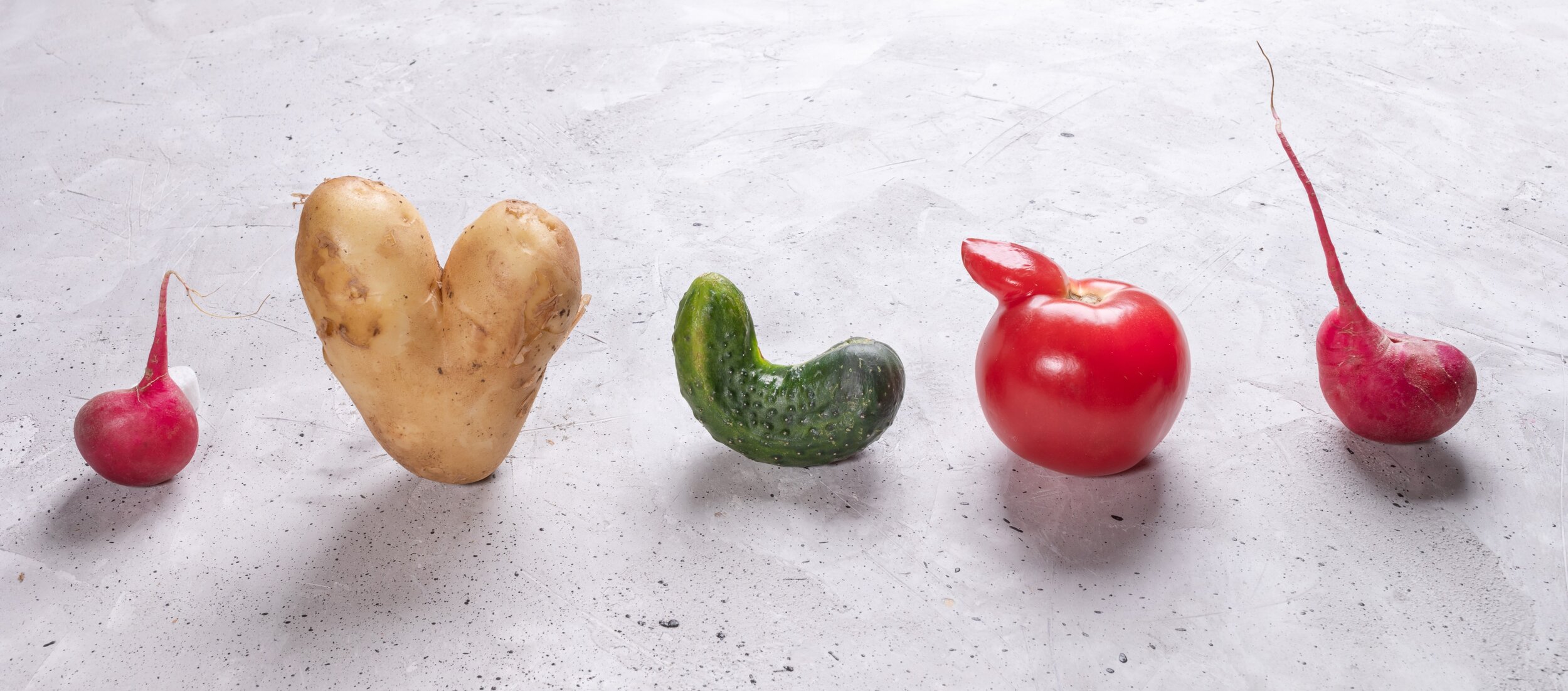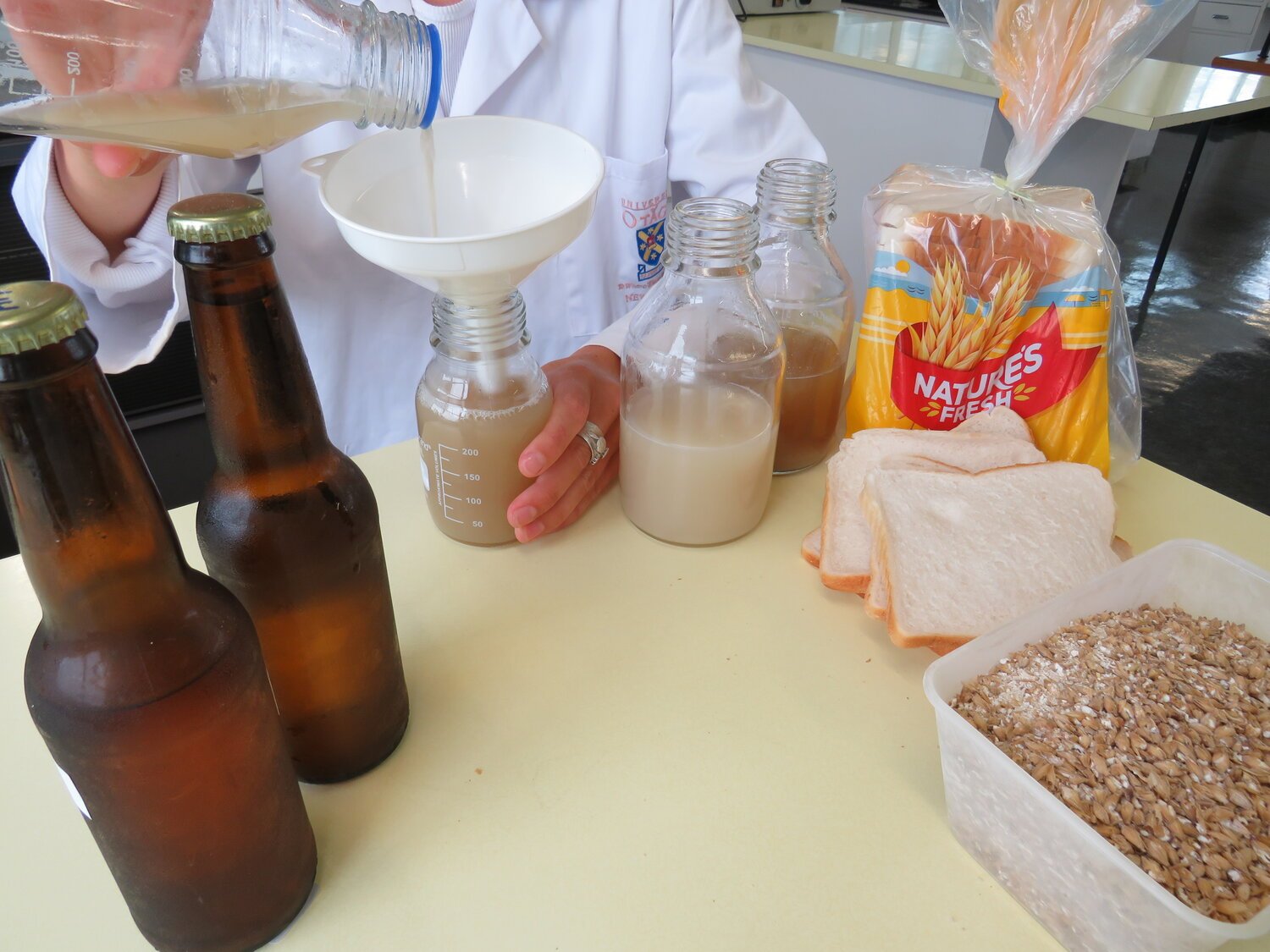
Our Resources
Discover a compilation of open-access resources authored or produced by Food Waste Innovation. Additionally, find a list at the bottom of this webpage of academic publications by our investigators, though not currently available through our resource centre.
For inquiries or further information about our resources, feel free to contact us.
Search by:
Type of resource
Please note you can only use one filter at a time, selecting a new filter will override the previous one.

Report - A Toast to Sustainability
This report by Consumer Food Graduate Ella Zwagerman spotlights Dunedin Craft Distillers' pioneering use of surplus bread to raise awareness of food waste.

Journal Article - Upcycled food: How does it support the three pillars of sustainability?
This review paper explores upcycled food's environmental, social, and economic impacts, underscoring its potential for sustainable food waste repurposing.

Journal Article - Consumer Acceptance of Upcycled Craft Beer: A New Zealand Case Study
This article explores consumer sentiment toward upcycled beer, emphasising the environmental benefits to help inform food manufacturers about future promotional strategies.

Journal Article - Upcycled foods: A nudge toward nutrition
This publication discusses opportunities for upcycled food manufacturers to produce more nutritious products.

Student Showcase Presentations
Food Waste Innovation hosted the Student Showcase session at the National Food Waste Summit in September 2022. Eight postgraduate students recorded presentations about their research.

The future of brewers spent grain – beyond crackers
This article by Sian Menson was awarded second prize in the Food Tech Solutions New Zealand Institute for Food Science and Technology Undergraduate Writing Competition 2022.

Upcycling: Great taste from coffee waste
If there is sufficient interest, a significant amount of waste can be redirected into value-added products, benefitting the consumer, the producer, and planet Earth.

Accessing Supermarket Shelves: Retail Category Managers Advice to Upcycled Food Manufacturers
This research provides recommendations to ‘upcycled food’ manufacturers and suppliers that will help improve engagement with retail product category managers. This in turn will hopefully increase the uptake of ‘upcycled food’ by retailers, thus supporting food waste reduction initiatives.

Vegan spent grain cake tutorial
This video tutorial shows how to make our Upcycled Food Lab’s recipe for ‘spent grain cake’. This recipe utilises otherwise wasted spent grain from the brewing process.

Food Waste Innovation Student Symposium 2022 presentations
Presentations by 10 Food Waste Innovation postgraduate and summer students on their research projects. Recorded in March 2022.

Upcycling food: A Trend that will Define the Industry!
This video is a recording of a talk given by Associate Professor Miranda Mirosa as part of the New Zealand Institute of Food Science and Technology’s annual general meeting. Miranda Discusses the future of upcycled food for consumers, the food industry, and of course, for the food waste problem.

Upcycled ginger beer soda recipe
This recipe is a step-by-step guide to upcycling bread into non-alcoholic ginger beer soda. This resource was developed and tested by scientists at our Upcycled Food Lab.

Homebrewers’ guide to upcycling bread into beer
This resource is a recipe for upcycling your surplus bread to make homebrew beer by replacing some of the malt with bread. Developed and tested by experts in our Upcycled Food Lab.

Food waste reduction roadmap
The food waste reduction roadmap details the barriers and potential solutions to reducing food waste from farm to fork. The roadmap highlights data gaps, particularly in production, and the need for the Government to progress data collection through a food loss and waste baseline.

Retail potential for upcycled foods: Evidence from New Zealand
This research explores the perception of upcycled foods from a panel of 1001 frequent shoppers at a large grocery retailer in New Zealand.
More publications not publicly available:
The list below includes publications authored by Food Waste Innovation investigators that are do not have ‘open access’ meaning they are not available for the general public to view. If you are a University of Otago staff or student, or a staff or student of another research institution, you may be able to access these publications through your University’s library databases.
Published in 2022-2023:
Mirosa, M., Bremer, P. (2023). Understanding New Foods: Upcycling. In: Serventi, L. (eds) Sustainable Food Innovation . Sustainable Development Goals Series. Springer, Cham. https://doi.org/10.1007/978-3-031-12358-0_11
Thorsen M, Mirosa M, Skeaff S. A Quantitative and Qualitative Study of Food Loss in Glasshouse-Grown Tomatoes. Horticulturae. 2022; 8(1):39. https://doi.org/10.3390/horticulturae8010039
Margaret Thorsen, Fiona Nyhof, Francesca Goodman-Smith, Jonathan Deutsch & Miranda Mirosa (2022) Accessing Supermarket Shelves: Retail Category Managers Advice to Upcycled Food Manufacturers, Journal of Food Products Marketing, 28:4, 179-192, DOI: 10.1080/10454446.2022.2072695
Thorsen, M., Skeaff, S., Goodman-Smith, F., Thong, B., Bremer, P., & Mirosa, M. (2022). Upcycled foods: A nudge toward nutrition [Perspective]. Frontiers in Nutrition, 9. https://doi.org/10.3389/fnut.2022.1071829
Clare, G., Bremer, P & Mirosa, M. 2022. The Impact of COVID-19 on Food Rescue Organisations in Aotearoa New Zealand and Recommendations for Ongoing Crisis Management. British Food Journal. IF: 3.47.
Published 2017-2021:
Böhner, N., Zareian, M., Tybussek, T., Silcock,P., Bremer, P., & Beauchamp, J. 2019. Interrelationship among myoglobin forms, lipid oxidation and protein carbonyls in minced pork packaged under modified atmosphere. Food Packaging and Shelf Life 20(2):
Zareian, M., Böhner, N. Loos,M. H., Silcock, P., Bremer, P. Buchamp, J. 2019. Evaluation of volatile organic compound release in modified atmosphere-packaged minced raw pork in relation to shelf-life. Food Packaging and Shelf Life,18:51-61.
Alahakoon, A.U., Oey, I., Bremer, P., Silcock, P. 2019. Quality and safety considerations of incorporating post-PEF ageing into the pulsed electric fields and sous vide processing chain. Food and Bioprocess Technology, 1-13.
Alothman, M., Lusk, K. A., Bremer, P. & Silcock P., 2018. Relationship between total microbial numbers, volatile organic compound composition, and the sensory characteristics of whole fresh chilled pasteurized milk, Food Packaging and Shelf Life,15, 69-7.
Buvé, C., Van Bedts, T., Haenen, A., Kebede, B., Braekers, R., Hendrickx, M., … Grauwet, T. (2018). Shelf-life dating of shelf-stable strawberry juice based on survival analysis of consumer acceptance information. Journal of the Science of Food & Agriculture, 98(9), 3437-3445. doi: 10.1002/jsfa.8856
Buvé, C., Neckebroeck, B., Haenen, A., Kebede, B., Hendrickx, M., Grauwet, T., & van Loey, A. (2018). Combining untargeted, targeted and sensory data to investigate the impact of storage on food volatiles: A case study on strawberry juice. Food Research International. Advance online publication. doi: 10.1016/j.foodres.2018.07.022
Schuster, L., Franke, C., Silcock, P., Beauchamp, J. & Bremer, P. 2018. Development of a novel sample reuse approach to measure the impact of lean meat, bone and adipose tissue on the development of volatiles in vacuum-packed chilled lamb stored at 2°C for 15 days. Meat Science, 24(145):31-39.
Marshall, J., Wassilak, C., Mirosa, M., Mainvil, L., Chisnall, S., Jones, E. (2018). Food Waste in the Café and Restaurant Sector in NZ. Industry Report: http://www.wasteminz.org.nz/wp-content/uploads/2018/10/New-Zealand-cafe-and-resturant-food-waste-WasteMINZ-2018.pdf
Althoman, M., Lusk, K. A., Silcock, P., Bremer, P. J. 2017. Comparing PTR-MS profile of milk inoculated with pure or mixed cultures of spoilage bacteria. Food Microbiology, 64:155-163. 3.579
Holland B., Akanbi T.O, Agyei D., Wang B., Barrow C.J. (2017). Bioprocessing of plant-derived bioactive phenolic compounds. Handbook of Food Bioengineering. Alexandru Mihai Grumezescu and Alina Maria Holban (Editors). Elsevier (UK)
Lee, P.Y., Kebede, B.T., Lusk, K., Mirosa, M., Oey, I. 2017. Investigating consumers' perception of apple juice as affected by novel and conventional processing technologies. International Journal of Food Science and Technology 52 (12), 2564-2571.
Mutsokoti, L., Panozzo, A., Tongonya, J., Kebede, B. T., Van Loey, A., & Hendrickx, M. (2017). Carotenoid stability and lipid oxidation during storage of low-fat carrot and tomato based systems. LWT, 80, 470-478. doi: 10.1016/j.lwt.2017.03.021
Campbell, H., Evans, D. and Murcott, A. (2017). Measurability, Austerity, Edibility: Introducing Waste to Food Regime Theory. Journal of Rural Studies. 51, 168-177. https://doi.org/10.1016/j.jrurstud.2017.01.017
Published prior to 2017:
Horne (2016), MDiet thesis – ‘Evaluating the practicability and utility of the Social Return on Investment tool in public health nutrition: A food redistribution case study, New Zealand’. Advisors: M Mirosa, L Mainvil. http://hdl.handle.net/10523/6310
Agyei D., Shanbhag B., and He L. (2015). Enzymes for food waste remediation and valorisation. Improving and tailoring enzymes for food quality and functionality. Yada R. (Ed.) Woodhead Publishing. pp. 123 – 145
Kebede, B. T., Grauwet, T., Palmers, S., Michiels, C., Hendrickx, M., & Van Loey, A. (2015). Investigating chemical changes during shelf-life of thermal and high-pressure high-temperature sterilised carrot purees: A ‘fingerprinting kinetics’ approach. Food Chemistry, 185, 119-126. doi: 10.1016/j.foodchem.2015.02.134
Wibowo, S., Grauwet, T., Kebede, B. T., Hendrickx, M., & Van Loey, A. (2015). Study of chemical changes in pasteurised orange juice during shelf-life: A fingerprinting-kinetics evaluation of the volatile fraction. Food Research International, 75, 295-304. doi: 10.1016/j.foodres.2015.06.020
Kebede, B. T., Grauwet, T., Magpusao, J., Palmers, S., Michiels, C., Hendrickx, M., & Van Loey, A. (2015). An integrated fingerprinting and kinetic approach to accelerated shelf-life testing of chemical changes in thermally treated carrot puree. Food Chemistry, 179, 94-102. doi: 10.1016/j.foodchem.2015.01.074
Mirosa, M. (2015). Household Food Waste Kitchen Diary Analysis for the Wider Wellington Region. Project report prepared for the Upper Hutt City Council, targeted at Wellington Regional Council Officers (Confidential report).
Evans, D., Campbell, H. and Murcott, A. (eds.) (2015) Waste Matters: New Perspectives on Food and Society. Sociological Review Monographs (Book 60): Wiley Blackwell. https://doi.org/10.1111/jiec.12307
Silcock, P., Alothman, M., Zardin, E., Heenan, S., Siefarth, C., Bremer, P. J. and Beauchamp, J. 2014. Microbially-induced changes in the volatile constituents of fresh chilled pasteurised milk during storage. Food Packaging and Shelf-life. 2:81-90.
Beauchamp, J., Zardin, E., Silcock, P., & Bremer, P. J. 2014. Monitoring photooxidation-induced dynamic changes in the volatile composition of extended shelf-life bovine milk by PTR-MS. Journal of Mass Spectrometry. 2014, 49(9), 952-8.
Reynolds, D. & Mirosa, M. (2014). A Load of Rubbish: Quantifying Food Waste in New Zealand. Project report prepared for WasteMINZ, the representative body of the waste and resource recovery sector in New Zealand (Confidential report).
Verachia, W., Niven and Bremer, P. 2012. The effect of postharvest handling and processing on sea urchin (Evechinus chloroticus) gonad quality. International Journal of Food Science and Technology 47:2545-2553. (IF 1.223).
Phillips, K., Bremer, P*., Silcock, P. , Hamid, N., Delahunty, C., Barker, M. and Kissick, J. 2009. Effect of gender, diet and storage time on the physical properties and sensory quality of sea urchin (Evechinus chloroticus) gonads. Aquaculture 288:205–215.
